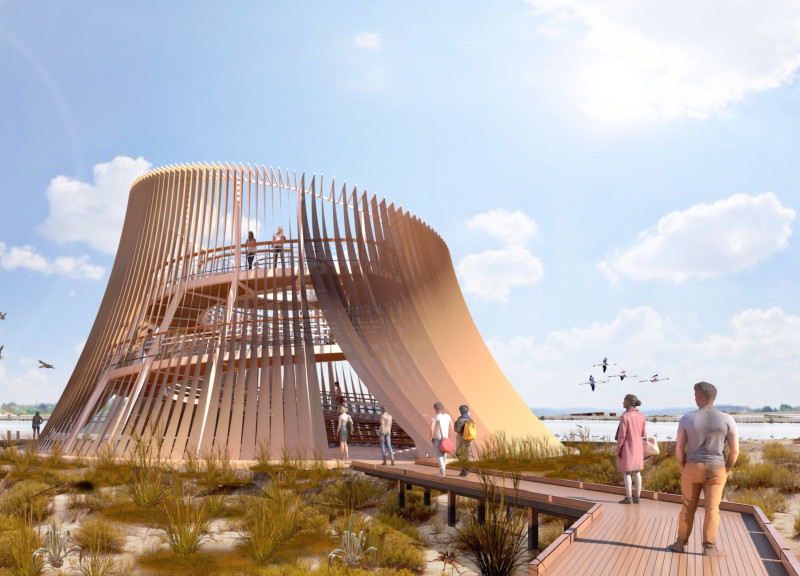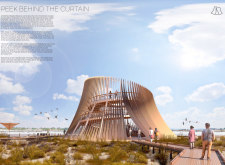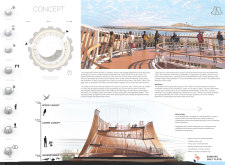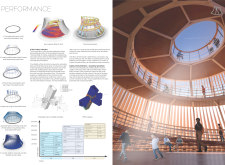5 key facts about this project
The Al Wathba Wetland Reserve project in southeast Abu Dhabi provides a thoughtful approach to blending architecture with nature. Situated in an area rich in wildlife and natural beauty, the project encourages visitors to engage with the environment. It features elevated boardwalks and a bird observation tower, designed to enhance the experience of those exploring the wetlands and to highlight the unique biodiversity found there.
Elevated Structures
The design incorporates boardwalk trails that are raised above the ground, allowing visitors to enjoy the surrounding views without disturbing the natural habitat. These pathways guide people through the wetlands, inviting them to discover the flora and fauna that thrive in this ecosystem. The height of the boardwalks ensures that wildlife can move freely beneath them, maintaining the integrity of the area.
Observation Tower
A key element of the project is the observation tower, which is designed to reflect the forms of the local landscape. Its understated appearance allows it to blend in with the environment. The tower features 133 fabric sails that serve multiple purposes. As visitors ascend the winding ramp, they are shielded from direct sunlight while being offered expansive views of the wetlands. The soft light filtering through the fabric creates a calming atmosphere.
Educational Facilities
The design also includes an amphitheater that serves as a space for educational talks about the local ecology. This gathering area encourages discussion and fosters a deeper understanding of the diversity in the reserve. Informational boards along the ramp enhance the experience by providing insights into the species found in the area, promoting awareness and respect for the ecosystem.
Structural Integrity
The project emphasizes careful structural design, taking into account the conditions of the site. Modular approaches are applied to the boardwalk design, ensuring efficient construction and the option for future expansion. Secondary beams support the structures, connecting to inclined columns that provide stability. This thoughtful engineering allows the design to meet both functional requirements and the ecological needs of the reserve.
The fabric sails of the observation tower are designed to reduce fluttering in windy conditions, showing attention to the local climate. As visitors navigate the spaces, they feel a connection to the natural world around them. The project stands as a model for future developments, balancing visitor engagement with environmental awareness.






















































